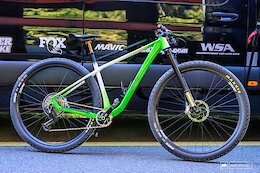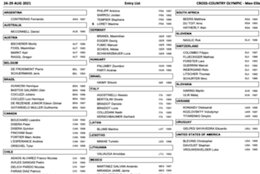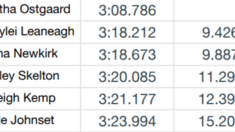Introduction:
In Q1 2025, SAP is planning to release the knowledge graph engine as a new capability for SAP HANA Cloud platform. This new multi-model engine allows businesses to connect and analyze information more effectively. SAP HANA Cloud will enable smarter applications and improve user experiences by using data stored in a graph to answer complex questions.
Knowledge graphs connect corporate knowledge, which makes them especially beneficial for powering large language models (LLMs) and generative AI capabilities. Developers can use business context to create applications that provide more precise and relevant answers, enhancing user interactions and improving business processes.
For many, the topic of knowledge graphs is new and exciting. I share below a brief introduction on the major concepts and how SAP plans for those concepts to materialize in SAP HANA Cloud.
Ontologies
An ontology is a guiding framework used to define at a higher level (i.e. classes, categories, groupings, etc.) the facts that occur in a domain and how those higher-level descriptions should relate to each other. Instead of focusing on the facts, an ontology regulates the resulting knowledge graph. For example, in the context of movies, an ontology could define the concept of “movies” and its attributes like title, director, genre, and release date, making the framework flexible and scalable for future data. Ontologies act as the blueprint for knowledge graphs, structuring and connecting data to allow deeper insights and reasoning.
Ontologies are critical for certain use cases where deep, structured relationships are required. For example, semantic networks often represent ontologies to map out concepts and relationships, and these structures can help with reasoning and inference. However, not every knowledge graph requires a complex ontology from the start. As needs grow, ontologies can be added to enrich the graph. The flexibility of knowledge graphs allows one to start small, deliver value quickly and expand over time as use cases become more complex.
Movies Ontology
Knowledge Graph
A knowledge graph is a structured representation of data (adhering to ontology rules), enhanced by real-world information. The knowledge graph captures relationships between entities, such as people, products, or events, and connects them in a meaningful way. Unlike data in normalized relations, a knowledge graph organizes information as triples where facts are represented as subject, predicate, and object. These triples form the core of the knowledge graph, revealing the logical relationships between different entities.
For example, consider the above example of movies ontology. A knowledge graph can store the facts of the movie Jurassic Park into a tripes format: Jurassic Park (subject) is directed by (predicate) Steven Spielberg (object). When you add more details, like the year of release, production company, and the sequel information, you can see the formation of a knowledge graph that connects all these data points.
Knowledge graphs are set apart by their ability to traverse relationships, much like navigating through a web of interconnected facts. Like reading through an encyclopedia, each piece of knowledge leads to another, revealing a chain of actionable insights. This search ability is especially powerful for tasks requiring complex reasoning, such as analyzing a supply chain. A virtual supply chain representation is a great example of connecting independent data silos to create knowledge. A company can trace the origin of materials, understand how external factors like weather disruptions in a supplier’s region might impact production, and identify alternative suppliers with more sustainable practices. Thus, the knowledge graphs can help businesses mitigate potential risks and optimize decision-making in real time.
Movies Knowledge Graph
SAP HANA Cloud Knowledge Graph Engine Planned Features
With the upcoming knowledge graph engine, SAP HANA Cloud gains the ability to manage and query semantically connected relationships – all within the same database as other relational and multi-model engines.
The key highlights are:
Native RDF Triple Store: One of the key features of the SAP HANA Cloud knowledge graph engine is its native support for RDF triple store. RDF (Resource Description Framework) is a widely accepted standard for modeling and representing data in graph structures. With this support, the platform allows users to store and manage ‘subject-predicate-object’ triples directly, providing an efficient and scalable way to represent relationships between data entities. This native capability ensures that the data stored in the knowledge graph adheres to global standards for graph databases, enabling seamless and deeper insights from complex relationships.SQL and SPARQL Interoperability: The knowledge graph engine will support SPARQL, the specialized query language for knowledge graph data, while tightly integrating it with SQL. This is achieved with the introduction of the following new SQL constructs:SPARQL_TABLE (): A SQL table function that allows developers to embed SPARQL SELECT queries within SQL statements, returning results in a table format that can be processed further using SQL operations like filters, joins, and aggregations. SPARQL_EXECUTE (): A Stored procedure that provides an interface for executing all types of SPARQL statements, including both SPARQL Query Forms and SPARQL Update.SQL_TABLE (): A SPARQL function that allows users to embed SQL queries directly within SPARQL statements. This function federates queries to the SQL engine (HANA index server process), with the results of the SQL statement being converted into graph patterns. SQL projections are mapped to corresponding SPARQL variables, enabling smooth integration between SQL and graph data.
SAP HANA Cloud knowledge graph engine vs the SAP HANA Cloud graph engine
SAP HANA Cloud already offers a graph engine designed to handle property graphs, which are excellent for analyzing relationships between entities. Now let’s use a retail supply chain use case as an example to highlight the differences between property graphs and knowledge graphs.
Property Graphs: These graphs are ideal for analyzing relationships between entities. In a property graph, data is represented as nodes (entities) and edges (relationships), where each edge can hold different properties that describe the connection between nodes. For instance, in a retail scenario, a property graph might show that Supplier A “delivers” Product X to Store Y. Another edge might indicate that Supplier B also delivers Product X to Store Z. This structure focuses on the relationships between entities, making it easy to map out who supplies what to whom, and where the products are sold.
Knowledge Graphs: In contrast, knowledge graphs focus on establishing facts and the logical relationships between those facts. They use a subject-predicate-object structure (triples), where each fact is stored as a relationship. For example, in a supply chain context, a knowledge graph captures facts such as “Product A is made from recycled materials,” “Supplier X follows sustainable sourcing practices,” and “Store Y is located in an eco-friendly area.” This type of graph goes beyond just showing who supplies the product, it allows you to ask more sophisticated questions, like “Which suppliers with eco-friendly practices are providing products to stores located in green-certified regions?”
In short, while property graphs help you visualize and analyze relationships between different entities, knowledge graphs bring context and reasoning into the mix, making it easier to derive actionable insights. Together, both graphs give you a complete picture of how entities interact and the deeper implications of those relationships.
Use Cases:
Enhance your Intelligent Data Applications & Gen AI: The in-memory database capabilities of SAP HANA Cloud already provide high-performance data processing, but the addition of a knowledge graph enables applications to gain an extra layer of understanding. This new feature is particularly valuable when it comes to enabling Gen AI use cases, such as grounding large language models (also called GraphRAG) in domain-specific knowledge. By storing and retrieving semantic facts about a business’s operations, relationships, and data, the knowledge graph can provide LLMs with the context they need to deliver more accurate and relevant responses – ultimately improving the quality of human-computer interaction.Establish a Data Fabric: With the Knowledge Graph Engine working seamlessly alongside the other multi-model engines in SAP HANA Cloud, such as the relational data, spatial, graph, JSON document store and vector engines, businesses can now bring structured and unstructured data together in a single platform, establishing a data fabric. This unified approach allows companies to query and analyze data holistically, breaking down traditional data silos. The semantic linking of data creates a unified view, allowing for accurate contextual understanding of complex concepts, such as the term “material” in different scenarios like manufacturing, sales, or procurement.Improved Decision Making & Logical Inference: Knowledge graphs in general contribute to better data governance by establishing clearer relationships and rules for data entities, which improves logical reasoning and helps users make more informed, accurate decisions with fewer errors.
Conclusion:
With the addition of such advanced capabilities, SAP HANA Cloud continues to be the database of choice for developers and organizations, supporting critical applications within the SAP Business Technology Platform ecosystem. To stay tuned for further updates in this area, follow me on the SAP Community for regular insights, and check out Thomas Hammer’s What’s New in SAP HANA Cloud blog series for the latest developments.
Introduction:In Q1 2025, SAP is planning to release the knowledge graph engine as a new capability for SAP HANA Cloud platform. This new multi-model engine allows businesses to connect and analyze information more effectively. SAP HANA Cloud will enable smarter applications and improve user experiences by using data stored in a graph to answer complex questions.Knowledge graphs connect corporate knowledge, which makes them especially beneficial for powering large language models (LLMs) and generative AI capabilities. Developers can use business context to create applications that provide more precise and relevant answers, enhancing user interactions and improving business processes.For many, the topic of knowledge graphs is new and exciting. I share below a brief introduction on the major concepts and how SAP plans for those concepts to materialize in SAP HANA Cloud.OntologiesAn ontology is a guiding framework used to define at a higher level (i.e. classes, categories, groupings, etc.) the facts that occur in a domain and how those higher-level descriptions should relate to each other. Instead of focusing on the facts, an ontology regulates the resulting knowledge graph. For example, in the context of movies, an ontology could define the concept of “movies” and its attributes like title, director, genre, and release date, making the framework flexible and scalable for future data. Ontologies act as the blueprint for knowledge graphs, structuring and connecting data to allow deeper insights and reasoning.Ontologies are critical for certain use cases where deep, structured relationships are required. For example, semantic networks often represent ontologies to map out concepts and relationships, and these structures can help with reasoning and inference. However, not every knowledge graph requires a complex ontology from the start. As needs grow, ontologies can be added to enrich the graph. The flexibility of knowledge graphs allows one to start small, deliver value quickly and expand over time as use cases become more complex.Movies OntologyKnowledge GraphA knowledge graph is a structured representation of data (adhering to ontology rules), enhanced by real-world information. The knowledge graph captures relationships between entities, such as people, products, or events, and connects them in a meaningful way. Unlike data in normalized relations, a knowledge graph organizes information as triples where facts are represented as subject, predicate, and object. These triples form the core of the knowledge graph, revealing the logical relationships between different entities.For example, consider the above example of movies ontology. A knowledge graph can store the facts of the movie Jurassic Park into a tripes format: Jurassic Park (subject) is directed by (predicate) Steven Spielberg (object). When you add more details, like the year of release, production company, and the sequel information, you can see the formation of a knowledge graph that connects all these data points. Knowledge graphs are set apart by their ability to traverse relationships, much like navigating through a web of interconnected facts. Like reading through an encyclopedia, each piece of knowledge leads to another, revealing a chain of actionable insights. This search ability is especially powerful for tasks requiring complex reasoning, such as analyzing a supply chain. A virtual supply chain representation is a great example of connecting independent data silos to create knowledge. A company can trace the origin of materials, understand how external factors like weather disruptions in a supplier’s region might impact production, and identify alternative suppliers with more sustainable practices. Thus, the knowledge graphs can help businesses mitigate potential risks and optimize decision-making in real time.Movies Knowledge GraphSAP HANA Cloud Knowledge Graph Engine Planned FeaturesWith the upcoming knowledge graph engine, SAP HANA Cloud gains the ability to manage and query semantically connected relationships – all within the same database as other relational and multi-model engines.The key highlights are:Native RDF Triple Store: One of the key features of the SAP HANA Cloud knowledge graph engine is its native support for RDF triple store. RDF (Resource Description Framework) is a widely accepted standard for modeling and representing data in graph structures. With this support, the platform allows users to store and manage ‘subject-predicate-object’ triples directly, providing an efficient and scalable way to represent relationships between data entities. This native capability ensures that the data stored in the knowledge graph adheres to global standards for graph databases, enabling seamless and deeper insights from complex relationships.SQL and SPARQL Interoperability: The knowledge graph engine will support SPARQL, the specialized query language for knowledge graph data, while tightly integrating it with SQL. This is achieved with the introduction of the following new SQL constructs:SPARQL_TABLE (): A SQL table function that allows developers to embed SPARQL SELECT queries within SQL statements, returning results in a table format that can be processed further using SQL operations like filters, joins, and aggregations. SPARQL_EXECUTE (): A Stored procedure that provides an interface for executing all types of SPARQL statements, including both SPARQL Query Forms and SPARQL Update.SQL_TABLE (): A SPARQL function that allows users to embed SQL queries directly within SPARQL statements. This function federates queries to the SQL engine (HANA index server process), with the results of the SQL statement being converted into graph patterns. SQL projections are mapped to corresponding SPARQL variables, enabling smooth integration between SQL and graph data.SAP HANA Cloud knowledge graph engine vs the SAP HANA Cloud graph engineSAP HANA Cloud already offers a graph engine designed to handle property graphs, which are excellent for analyzing relationships between entities. Now let’s use a retail supply chain use case as an example to highlight the differences between property graphs and knowledge graphs.Property Graphs: These graphs are ideal for analyzing relationships between entities. In a property graph, data is represented as nodes (entities) and edges (relationships), where each edge can hold different properties that describe the connection between nodes. For instance, in a retail scenario, a property graph might show that Supplier A “delivers” Product X to Store Y. Another edge might indicate that Supplier B also delivers Product X to Store Z. This structure focuses on the relationships between entities, making it easy to map out who supplies what to whom, and where the products are sold.Knowledge Graphs: In contrast, knowledge graphs focus on establishing facts and the logical relationships between those facts. They use a subject-predicate-object structure (triples), where each fact is stored as a relationship. For example, in a supply chain context, a knowledge graph captures facts such as “Product A is made from recycled materials,” “Supplier X follows sustainable sourcing practices,” and “Store Y is located in an eco-friendly area.” This type of graph goes beyond just showing who supplies the product, it allows you to ask more sophisticated questions, like “Which suppliers with eco-friendly practices are providing products to stores located in green-certified regions?”In short, while property graphs help you visualize and analyze relationships between different entities, knowledge graphs bring context and reasoning into the mix, making it easier to derive actionable insights. Together, both graphs give you a complete picture of how entities interact and the deeper implications of those relationships.Use Cases:Enhance your Intelligent Data Applications & Gen AI: The in-memory database capabilities of SAP HANA Cloud already provide high-performance data processing, but the addition of a knowledge graph enables applications to gain an extra layer of understanding. This new feature is particularly valuable when it comes to enabling Gen AI use cases, such as grounding large language models (also called GraphRAG) in domain-specific knowledge. By storing and retrieving semantic facts about a business’s operations, relationships, and data, the knowledge graph can provide LLMs with the context they need to deliver more accurate and relevant responses – ultimately improving the quality of human-computer interaction.Establish a Data Fabric: With the Knowledge Graph Engine working seamlessly alongside the other multi-model engines in SAP HANA Cloud, such as the relational data, spatial, graph, JSON document store and vector engines, businesses can now bring structured and unstructured data together in a single platform, establishing a data fabric. This unified approach allows companies to query and analyze data holistically, breaking down traditional data silos. The semantic linking of data creates a unified view, allowing for accurate contextual understanding of complex concepts, such as the term “material” in different scenarios like manufacturing, sales, or procurement.Improved Decision Making & Logical Inference: Knowledge graphs in general contribute to better data governance by establishing clearer relationships and rules for data entities, which improves logical reasoning and helps users make more informed, accurate decisions with fewer errors.Conclusion:With the addition of such advanced capabilities, SAP HANA Cloud continues to be the database of choice for developers and organizations, supporting critical applications within the SAP Business Technology Platform ecosystem. To stay tuned for further updates in this area, follow me on the SAP Community for regular insights, and check out Thomas Hammer’s What’s New in SAP HANA Cloud blog series for the latest developments. Read More Technology Blogs by SAP articles
#SAP
#SAPTechnologyblog













